
In our LIGHT RIGHT: A COMPREHENSIVE GUIDE TO THE 3 KINDS OF LIGHTS blog post, we introduced you to the three major kinds of lighting: General, task, and accent.
While the general taxonomy remains the same, each room in your house will require different considerations for specific functions, types of traffic, and aesthetics. Your living room is the most visited room, second only to the kitchen, in your home.
Follow our guide with 3 sample living room layouts for choosing general, task, and accent lighting to achieve the perfect lighting plan for your living room.

- TYPES OF LIGHT: Sheer pendants and chandeliers as a rule of thumb Recessed or track lighting. Wall sconces and other vertical lights that illuminate the walls give a sense of spacial awareness and also can make room feel larger.
- LOCATION: Ceiling and walls. You want this light to be cast down over everything including the walls. Recessed lights and track lights on the ceiling work great, as well as flush mounted fixtures that hang close to the ceiling. Perimeter wall sconces that cast light vertically can help define the overall space by illuminating the walls themselves.
- LAYOUT RULES: For a handy (and easy) mathematical guide to planning recessed light placement click here. For all general lighting, the goal should be even distribution and comfortable levels of lighting.
- HEIGHT: Ceiling height, pendants should be hung 70” above the floor and 28”-36” above a table or island.
- MATERIALS: Glass, sheer fixtures (or opaque fixtures that cast light widely). Can/recessed track lighting.
- LUMENS & WATTAGE: 800 lumens. 60 watts for incandescent, 6 watts LED. *For more info on what Lumens means, click here. Lumens and wattage do not always match up the same, so be sure to check both indicators when purchasing bulbs. *
- EXAMPLES:
BENDING THE RULES: Sheer fixtures are great for allowing light to cast evenly through a space. However, if you fall in love with an opaque fixture use it. Place it so that the light casts widely, or find a fixture with a low-placed socket that casts the light down and out, and does not concentrate or direct the light. For a great example of this check out our clay pendant lights.

- TYPES OF LIGHT: Opaque shaded pendants hung low, articulated sconces that allow you to shift or direct light. Free-standing lights, desk lights, table lamps etc.
- LOCATION: Over or flanking work spaces, under cabinets, over tables, islands. Anywhere additional lighting is needed to illuminate an area for a specific task.
- LAYOUT RULES: Customize to your space and specific needs. Light brightness should be 3:1 ratio with general lighting to eliminate shadows and reduce eye strain in areas where tasks like preparing food, reading, working, etc are being performed.
- HEIGHT: Generally lower than general lighting and closer to ‘the task at hand’. However they can be placed at the same height as general lighting (70” if walking through, 28-36” over table or island) as long as the light is focused directly below the fixture. You should either be able to reach, turn, dim, or move the light or wire the fixture to a separate switch/dimmer so it can be adjusted independently from general lighting.
- MATERIALS: Low hung clay, metal, or opaque glass.
- LUMENS & WATTAGE: 1100-1600 lumens. 75-100 watts for incandescent, up to 10 for LED.
- EXAMPLES:
BENDING THE RULES: For non sheer pendants and chandeliers, try hanging them higher than usual. Diffused light will cast down evenly over the space rather than be directed by the fixture. Our Farmhouse Collection is a versatile choice.

- TYPES OF LIGHT: As the ‘Jewelry of the Room,’ accent lighting is whatever you want it to be. Use fixtures to highlight architectural elements and decor. Use decorative & artistic fixtures and the lights will become accents & art themselves.
- LOCATION: Flanking architectural elements such as fireplaces. Create focal points and areas of interest to lead the eye around the room.
- LAYOUT RULES: Usually center of room, or flanking architectural and/or design elements. Accent lights will create focal points throughout your space- you choose!
- HEIGHT: 70” for walk through, 28-36” above tables or islands. May vary depending on the elements you choose to illuminate.
- MATERIALS: Anything! That is the beauty of finding accent lighting to work in your space & for your tastes. Have fun with it!
- LUMENS & WATTAGE: 300-450 lumens. 30-40 watts for incandescent, up to 4 for LED.
- EXAMPLES:
BENDING THE RULES: Accent lighting can double as general lighting by adding a dimmer. Clustering smaller fixtures helps to improve utility as well, making your favorite accent light a task or general light. Our Geode Collection can multi-task.

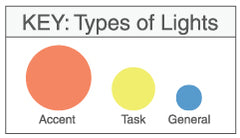
1. The Office/Living Room Combo.
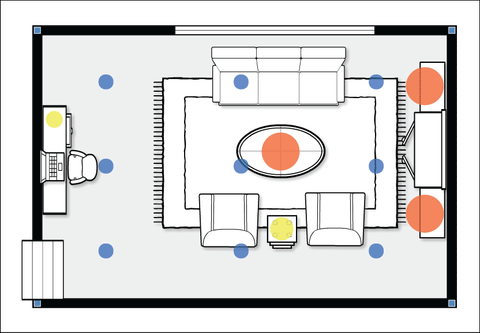
Overall general lighting placement illuminates both sitting and working areas. Additional task lighting allows for comfortable reading & working, while accent lighting defines the space.
2. The Fireplace Focal Point.

A smaller space still requires adequate general lighting. Accent lighting flanking the fireplace showcases an important architectural feature.
3. Living/Eating/Playing.
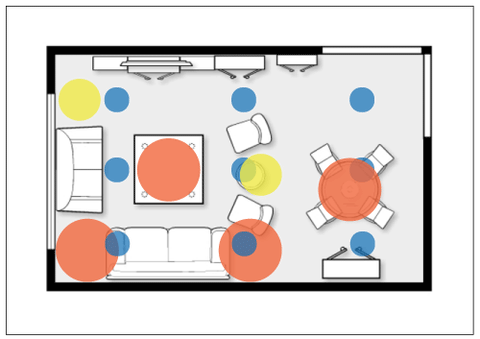 Multi-purpose rooms are common in a modern home. Use layered task & accent lighting to break up the space while general lighting takes care of overall illumination.
Multi-purpose rooms are common in a modern home. Use layered task & accent lighting to break up the space while general lighting takes care of overall illumination.


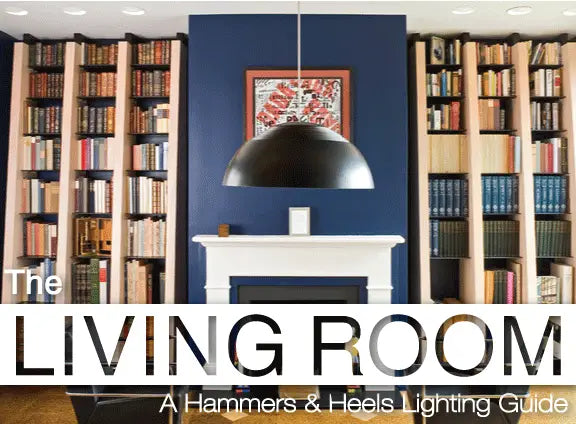

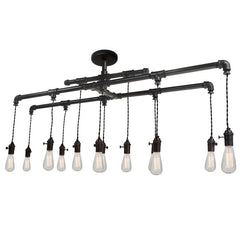
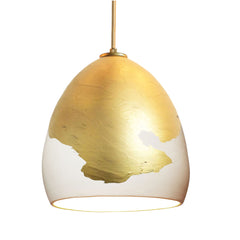
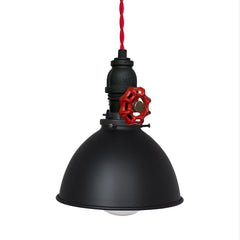

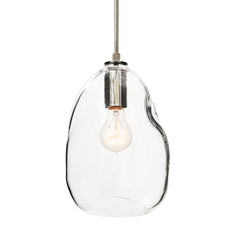


 Multi-purpose rooms are common in a modern home. Use layered task & accent lighting to break up the space while general lighting takes care of overall illumination.
Multi-purpose rooms are common in a modern home. Use layered task & accent lighting to break up the space while general lighting takes care of overall illumination.